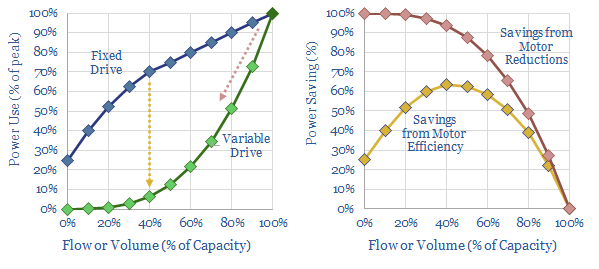Variable frequency drives precisely control motors. Amazingly they could reduce global electricity demand by c10%. We expect a sharp acceleration due to sustained energy shortages, increasingly renewable-heavy grids and excellent 20-50% IRRs. Hence this 14-page note reviews the opportunity and who benefits.
There are 50bn electric motors in the world consuming half of all global electricity. They are inefficient because their speed is determined principally by the frequency of the AC power grid. The physics and electronics of this inefficiency are outlined on pages 2-4.
Variable frequency drives use similar power-electronics technology as the renewables revolution, to precisely control electric motors, ensuring they do not run faster than is needed. We outline how they work and case studies of their energy savings on pages 5-7.
Excellent economics are laid out on pages 8-10. We see IRRs in the range of 20-50% and payback periods in the range of 1-5 years, depending on power prices and CO2 prices.
Improved resiliency in renewable-heavy grids is a further advantage, protecting against voltage sags, lack of inertia, trips and motor degradation. There may even be an opportunity for demand shifting. These issues are explored on pages 11-12.
Leading companies are described on pages 13-14, including their market shares, proportionate concentration to the theme and product offerings.

